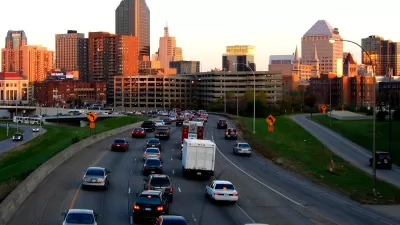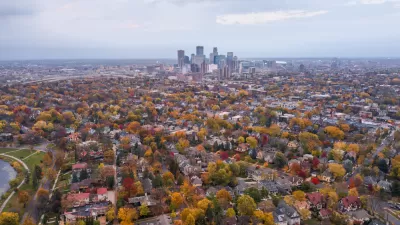A new study by researchers at the University of Minnesota identifies the consequences of Twin Cities affordable housing policy: deepening racial and economic segregation.
Peter Callaghen reports on a study released recently by Myron Orfield, University of Minnesota law professor and director of the school's Institute on Metropolitan Opportunity, that lays the blame for segregation in the Twin Cities region on unintended consequences of housing policy and education reforms.
The study compares findings about the neighborhoods and parts of the city that low-income black residents call home in the Twin Cities to similar populations in Seattle and Portland [pdf]. The study finds that in 2012, "19 percent of low-income black residents of the Twin Cities live in high-poverty census tracts (up from 13 percent in 2000) compared to just 3.4 percent of low-income black residents in Seattle (down from 3.5 percent in 2000) and 1.6 percent in Portland (down from 1.9 percent in 2000)."
As for the housing policies that increased segregation, the study specifically blames "policies and practices that redirected affordable housing programs from mostly white suburbs back to segregated neighborhoods in Minneapolis, St. Paul and first-tier suburbs such as Brooklyn Center and Richfield." The effect of centralizing affordable housing, according to Orfield's argument: segregation.
Callaghan explains further: "Between 2002 and 2011, the report notes, the region produced 2,249 new affordable units (affordable defined as being within reach of those earning 30 percent of the metro area’s median income). Ninety-two percent of these units were located in the central cities, the study reports." According to Orfield, that amounts to the central cities receiving "four times their fair share of very low-income units."
Orfield's lays the blame for the negative effects of affordable housing policy at the feet of the "Poverty Housing Industry"—or, as Orfield describes it, "a web of tightly interconnected government agencies, non-profits, private developers, banks, and investors, all dependent upon a profitable model of building low-income housing in poor central city neighborhoods."
FULL STORY: Why are the Twin Cities so segregated? A new report blames housing policies — and education reforms

Maui's Vacation Rental Debate Turns Ugly
Verbal attacks, misinformation campaigns and fistfights plague a high-stakes debate to convert thousands of vacation rentals into long-term housing.

Planetizen Federal Action Tracker
A weekly monitor of how Trump’s orders and actions are impacting planners and planning in America.

Chicago’s Ghost Rails
Just beneath the surface of the modern city lie the remnants of its expansive early 20th-century streetcar system.

Bend, Oregon Zoning Reforms Prioritize Small-Scale Housing
The city altered its zoning code to allow multi-family housing and eliminated parking mandates citywide.

Amtrak Cutting Jobs, Funding to High-Speed Rail
The agency plans to cut 10 percent of its workforce and has confirmed it will not fund new high-speed rail projects.

LA Denies Basic Services to Unhoused Residents
The city has repeatedly failed to respond to requests for trash pickup at encampment sites, and eliminated a program that provided mobile showers and toilets.
Urban Design for Planners 1: Software Tools
This six-course series explores essential urban design concepts using open source software and equips planners with the tools they need to participate fully in the urban design process.
Planning for Universal Design
Learn the tools for implementing Universal Design in planning regulations.
planning NEXT
Appalachian Highlands Housing Partners
Mpact (founded as Rail~Volution)
City of Camden Redevelopment Agency
City of Astoria
City of Portland
City of Laramie





























